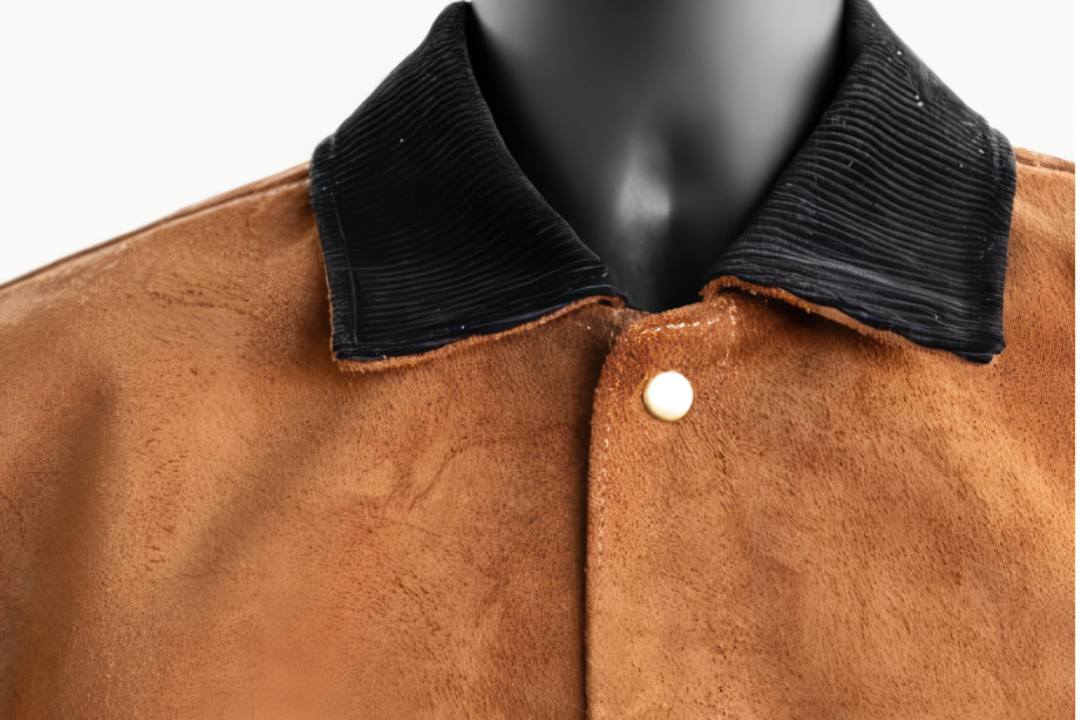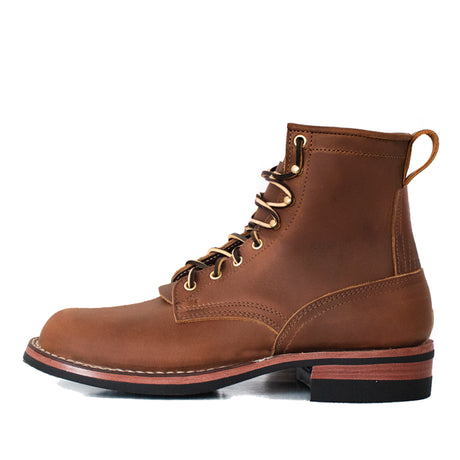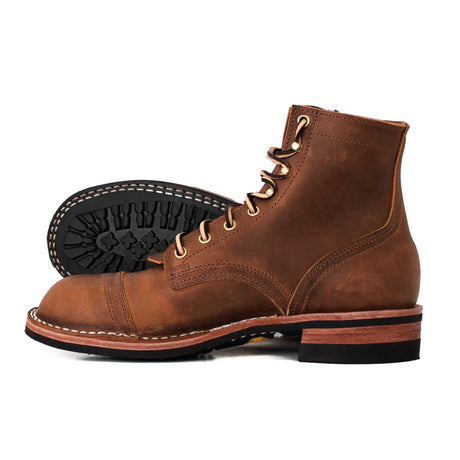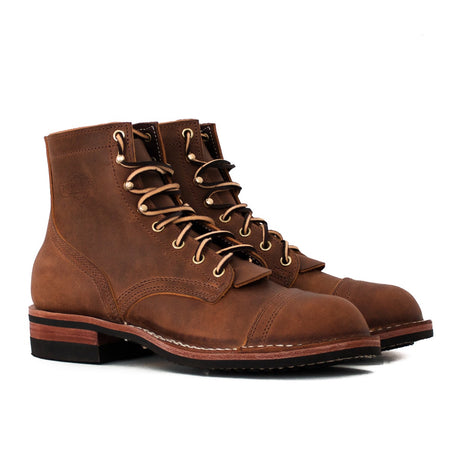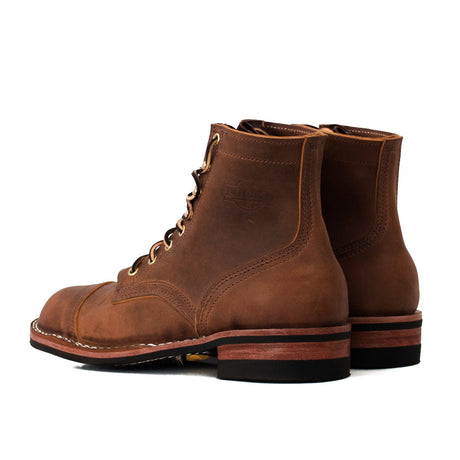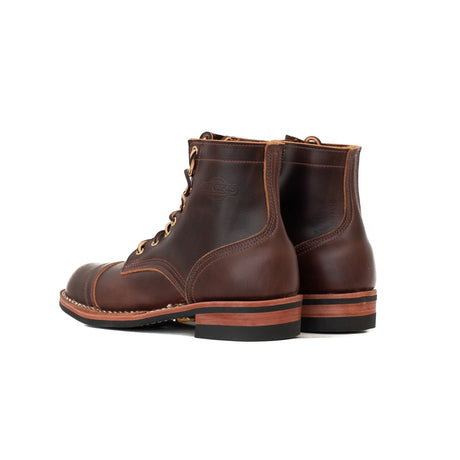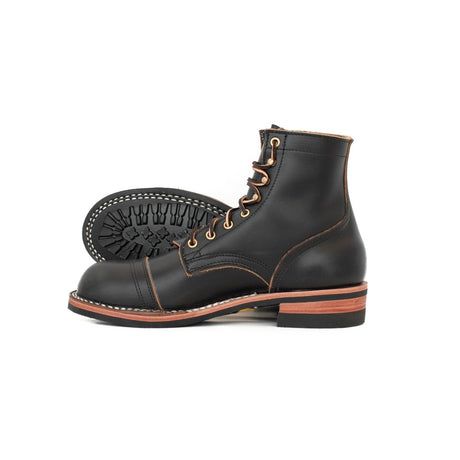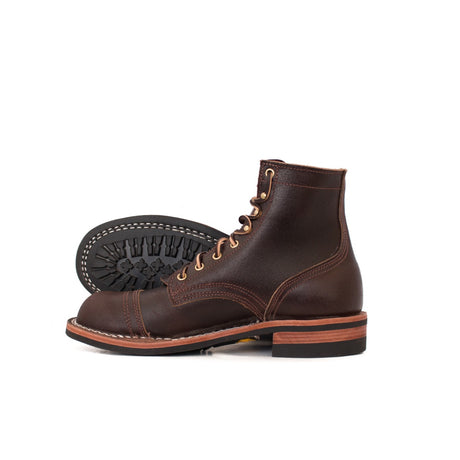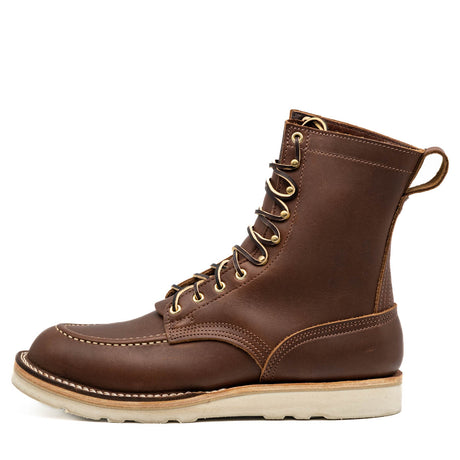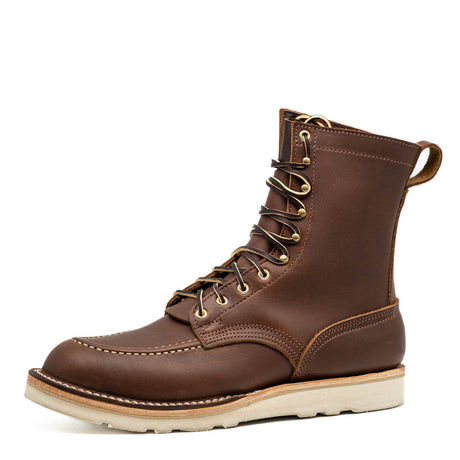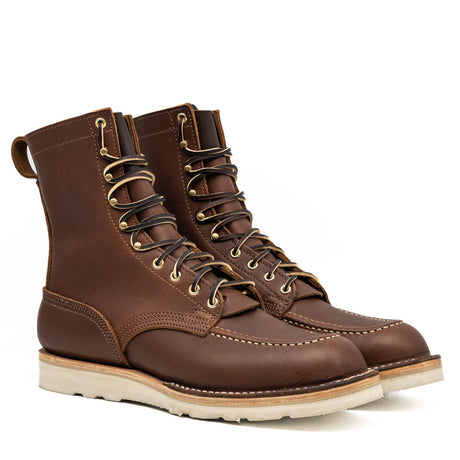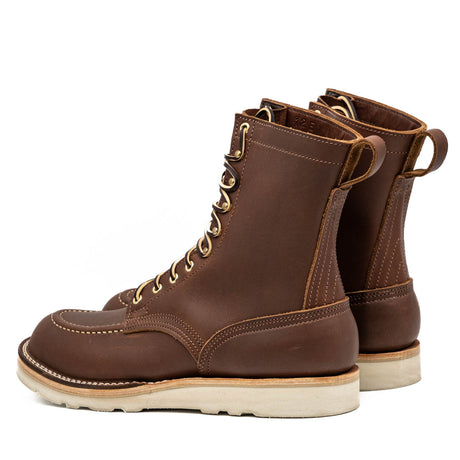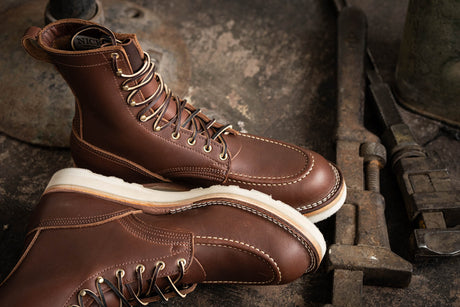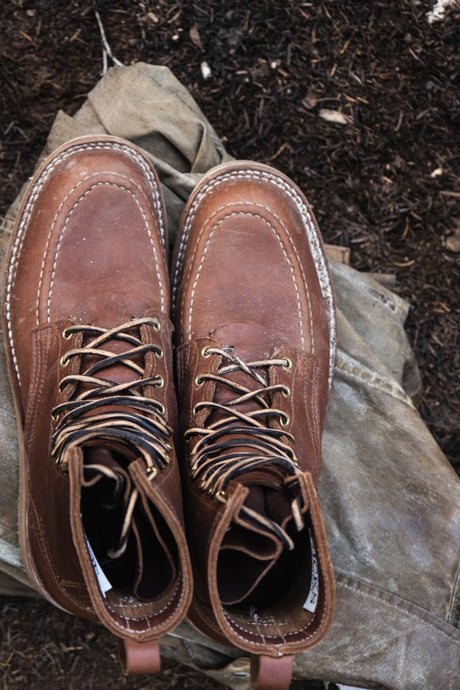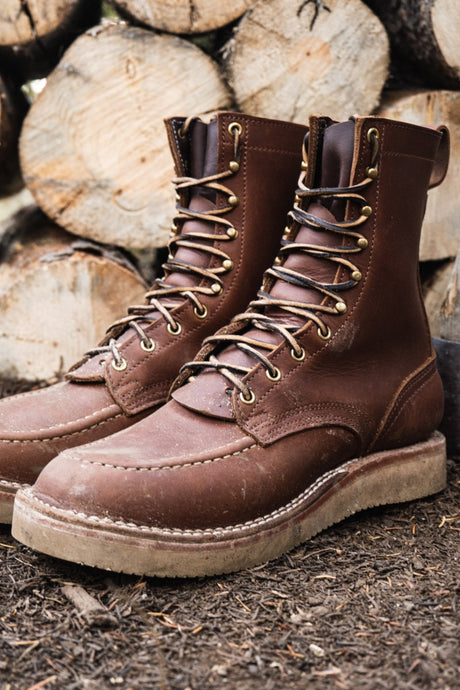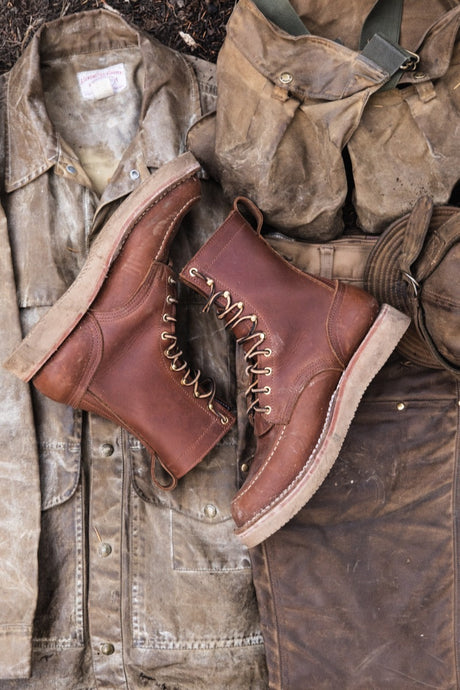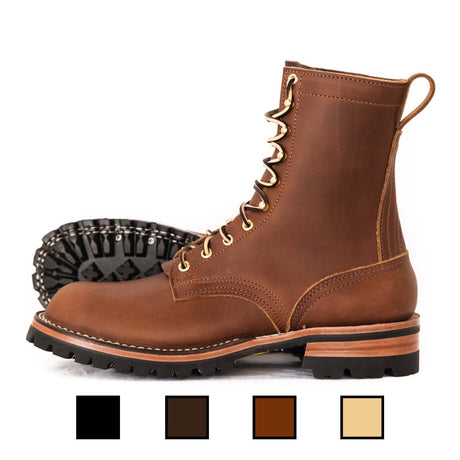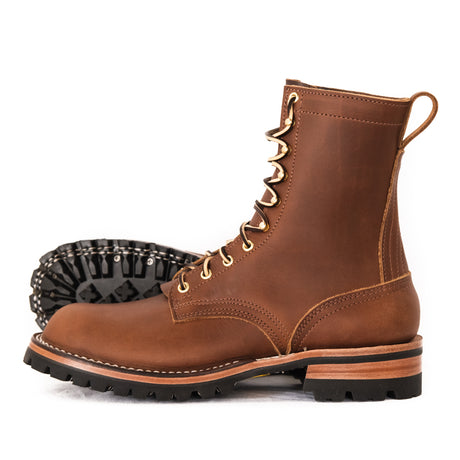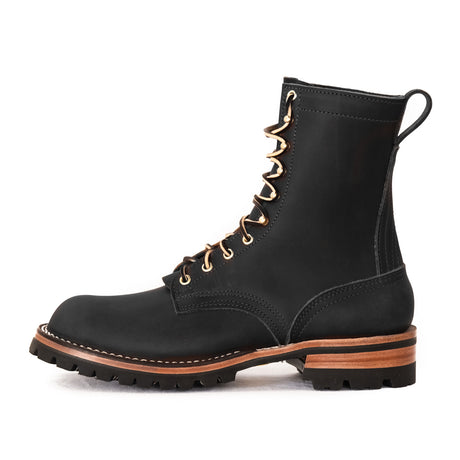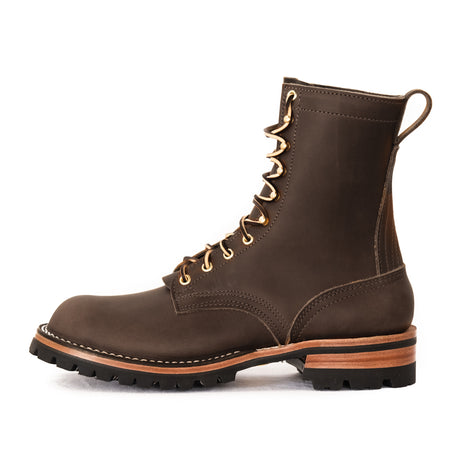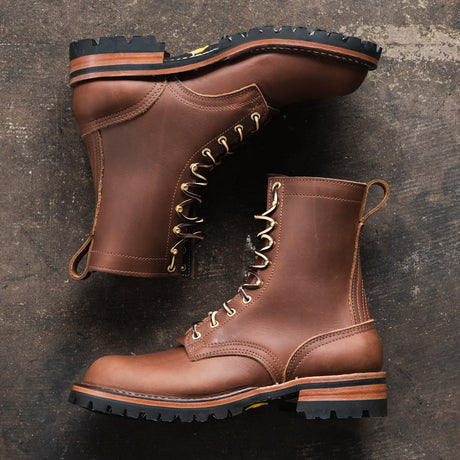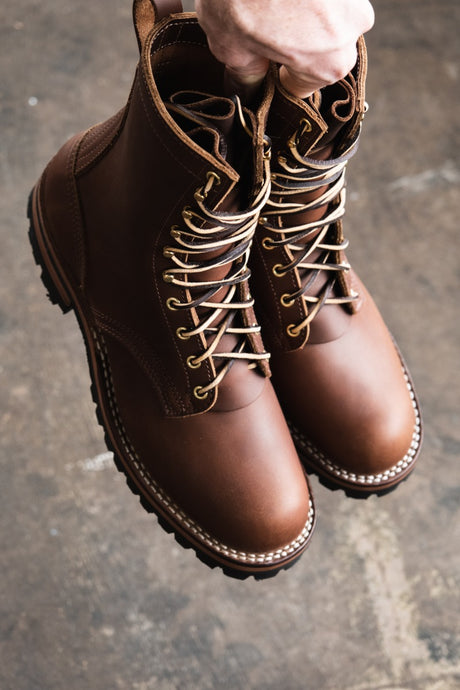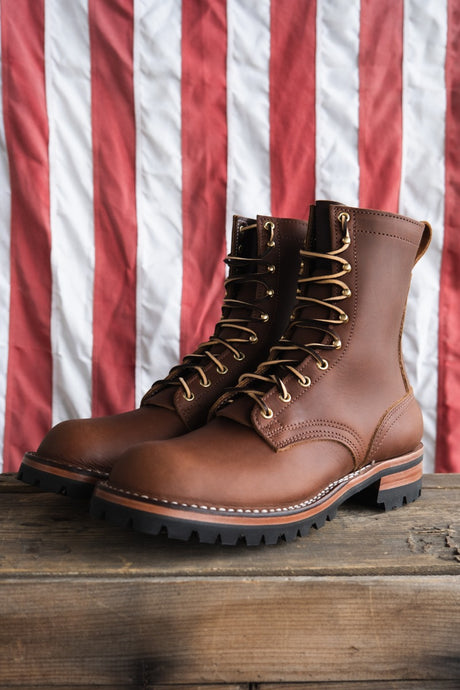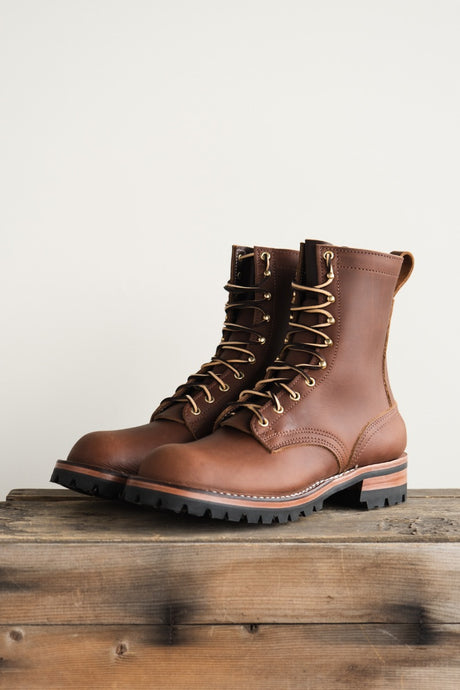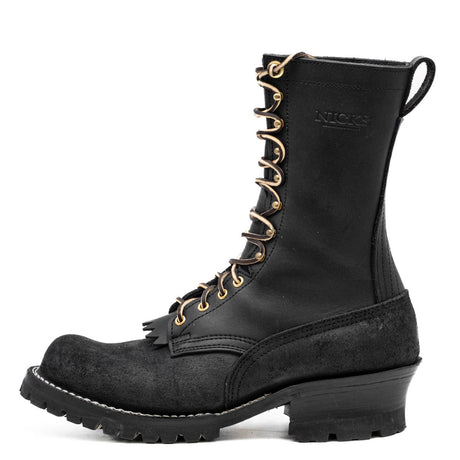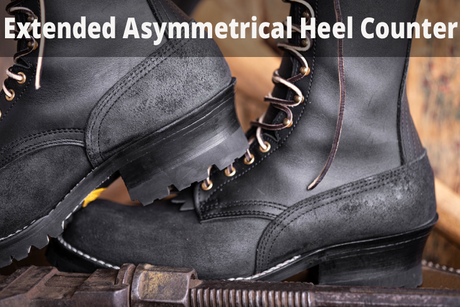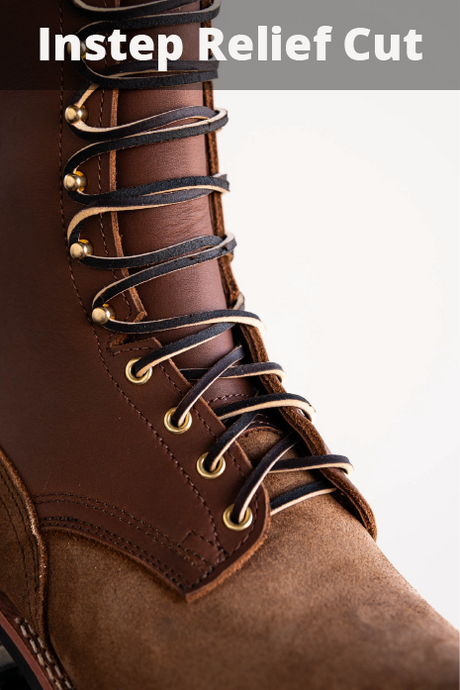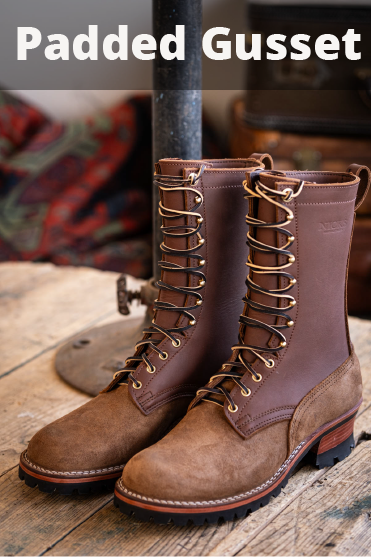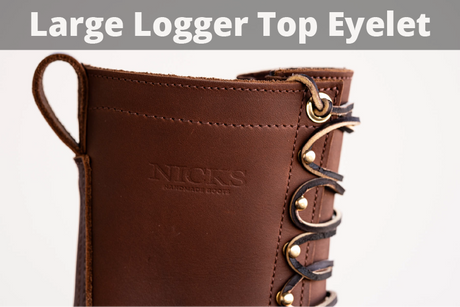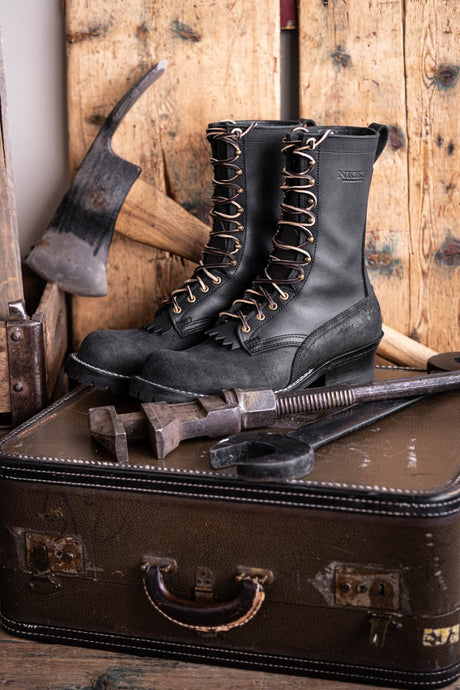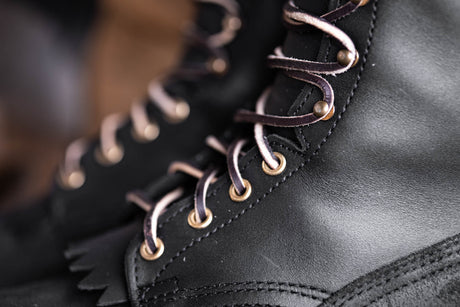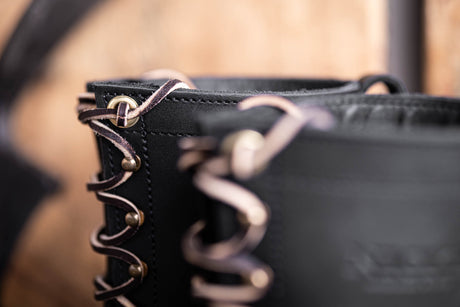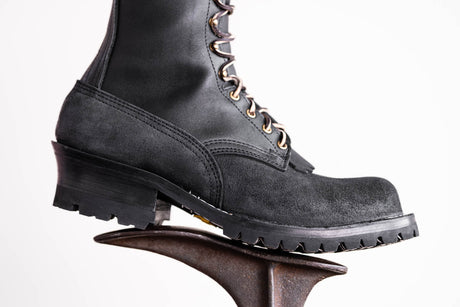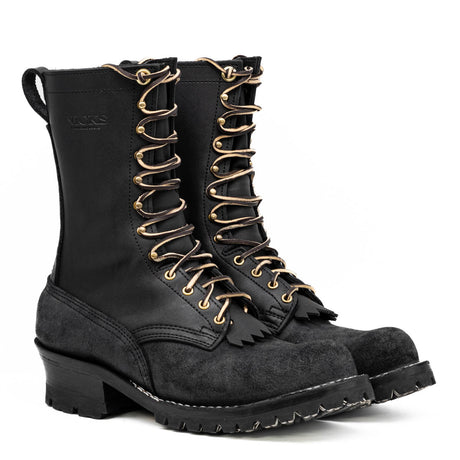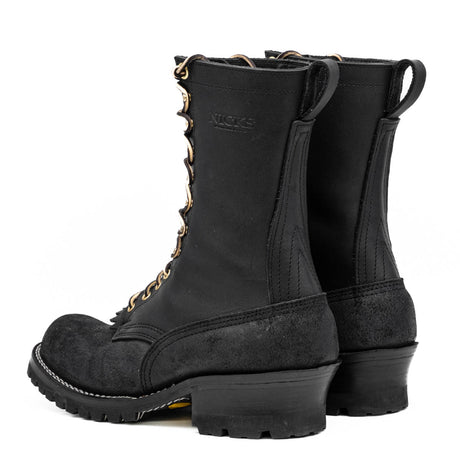Key Takeaways:
- Leather Breaks in Naturally With Wear: The best way to break in a leather jacket is to wear it regularly and move naturally in it. Over time, the material softens, molds to your body, and develops character.
- Moisture and Heat Can Help—But in Moderation: A little rain or warmth can aid the break-in process, but too much can damage the leather. Always dry your jacket properly and apply conditioner sparingly to maintain its integrity.
- Proper Storage Keeps Leather in Good Condition: Using a sturdy hanger and storing your jacket in a cool, dry place prevents unnecessary stiffness and creasing. Keeping it in a breathable space helps maintain its natural flexibility.
Why does a brand-new leather jacket feel stiff and unyielding? While it’s built to last, the initial rigidity can make it seem like the jacket is wearing you rather than the other way around. Unlike other materials, leather needs time to soften, flex, and mold to your body, creating that signature lived-in look that makes it uniquely yours.
At Nicks Boots, we craft high-quality leather jackets focusing on durability, craftsmanship, and timeless style. We understand that a leather jacket isn’t just another piece of clothing—it’s an investment, a statement, and, over time, a reflection of its owner. The break-in process is essential, and when done right, it enhances your jacket's comfort and character without compromising its longevity.
In this guide, we’ll walk you through the most effective techniques for properly breaking in your leather jacket. Whether you’re looking to speed up the process or let it happen naturally, these steps will ensure your jacket softens, fits better, and develops that perfect, worn-in feel.
How Long Does It Take To Break In A Leather Jacket?
The break-in period for a leather jacket varies based on factors such as the type of leather, frequency of wear, and softening techniques used. Typically, a high-quality jacket, like the Leather Patriot Type 3 Jacket or the Ranchman Jacket, takes anywhere from a few weeks to a couple of months to fully adapt to your body. The more you wear it and move in it, the faster it will soften and contour to your shape.
Thicker, full-grain leathers, often found in durable workwear jackets, require more time to break in than softer, more flexible options. If you're looking to accelerate the process, there are gentle methods to help the leather relax without causing damage. However, patience is crucial—rushing the break-in period with extreme techniques can compromise the longevity of your jacket.

Step 1: Wear It Often
The easiest and most natural way to break in a leather jacket is to wear it as much as possible. Leather is a dynamic material that responds to body heat, friction, and movement, gradually softening and molding to your shape. The more frequently you put it on—whether for a quick trip outside or a full day of wear—the faster it will relax and develop that perfect fit.
Don’t just wear it; move in it. Stretch your arms, twist your torso, and continue your daily activities to encourage the leather to flex and crease naturally. Even wearing it indoors while watching TV or working at your desk can help loosen stiff areas, particularly in the shoulders and elbows.
Step 2: Move Around In It
Breaking into a leather jacket isn’t just about wearing it—it’s about actively moving in it. Since leather softens with motion, engaging in regular activities while wearing your jacket will help loosen stiff areas more quickly. Simple movements like stretching your arms, bending your elbows, and rolling your shoulders will encourage the leather to crease and conform to your body.
For a more deliberate break-in process, try wearing your jacket while doing light physical activities. Go for a walk, take a short bike ride, or do a few squats and arm circles to help the leather flex. Over time, these movements will create natural wear patterns, making the jacket feel more comfortable and tailored to you.
Step 3: Layer Up Underneath
Wearing extra layers beneath your leather jacket can help speed up the break-in process. The added bulk applies gentle pressure, stretching the leather naturally without forcing it too much:
- Choose the Right Layers: Opt for thicker clothing like hoodies, sweaters, or flannels. These fabrics provide enough resistance to help loosen stiff areas without overstretching the leather.
- Focus on Tight Areas: If your jacket feels snug in the shoulders, arms, or chest, layering underneath can gradually expand these sections. The extra fabric creates tension, allowing the leather to adjust to your natural shape.
- Wear It for Extended Periods: Put on your layered outfit and keep the jacket on for a few hours. The longer you wear it, the more time the leather has to adapt to the added pressure.
- Move While Layered Up: Engage in simple movements like bending your arms, rolling your shoulders, or stretching your torso. This encourages the leather to flex and soften at natural creases, speeding up the break-in process.
- Remove Layers as It Loosens: Once your jacket feels more comfortable, gradually reduce the number of layers. Eventually, the leather will have molded to your body, allowing for a perfect fit with minimal effort.
Step 4: Use Leather Conditioner (But Not Too Much)
Leather needs moisture to stay soft and flexible, but too much conditioner can make it overly supple or greasy. Applying the right amount at the right time will help break in your jacket without damaging the material:
- Choose a High-Quality Leather Conditioner: Not all conditioners are created equal—look for a product specifically designed for your type of leather. Avoid excessive oils or waxes, which can clog the leather’s pores and alter its texture.
- Apply a Small Amount First: Start with a dime-sized portion of conditioner on a soft cloth or your fingertips. Gently rub it into a small, inconspicuous area to test how the leather reacts before applying it.
- Work It Evenly into the Leather: Use circular motions to massage the conditioner into the surface, focusing on stiff or dry areas. This helps soften the leather while ensuring an even distribution without oversaturation.
- Let It Absorb Before Wearing: After application, allow the jacket to sit for a few hours or overnight so the leather can fully absorb the conditioner. Wiping away any excess ensures the material remains breathable and doesn’t feel greasy.
- Condition Only When Necessary: Leather doesn’t need frequent conditioning—once every few months is usually enough. Over-conditioning can weaken the fibers, so apply it sparingly to maintain the jacket’s durability and natural texture.
Step 5: Expose It To The Elements (Within Reason)
Leather jackets are meant to be lived in, and natural exposure to the elements can help soften and shape them over time. While extreme weather can be damaging, moderate exposure to fresh air, light moisture, and varying temperatures can accelerate the break-in process. The key is to allow the leather to adapt naturally without subjecting it to harsh conditions that could cause drying or cracking.
A little rain or humidity can help loosen stiff leather fibers, making the material more flexible. However, you should never fully soak your jacket, as excessive moisture can strip away natural oils and lead to long-term damage. If your jacket does get damp, wear it until it dries to let it mold to your body, then follow up with a light application of conditioner to restore lost moisture.
Sunlight and body heat also soften leather, making it more pliable over time. Wearing your jacket outside on a warm day allows the leather to absorb heat, which naturally relaxes the fibers and helps it conform to your movements. Just be cautious not to leave it in direct sunlight for too long, as excessive exposure can fade the color and dry out the material.
Step 6: Store It Properly When Not In Use
How you store your leather jacket when you’re not wearing it is crucial in maintaining its shape and softness. Improper storage can lead to stiffness, creases in unwanted areas, and even long-term damage. Taking a few simple precautions ensures your jacket stays in prime condition while continuing to break in naturally.
Always use a sturdy, wide-shouldered hanger to maintain the jacket’s natural structure. Thin wire hangers can create dents in the leather, especially in the shoulder area, leading to an uneven fit. A wooden or padded hanger provides better support and prevents the jacket from developing awkward folds.
Keep your jacket in a cool, dry place with good air circulation to prevent excessive drying or moisture buildup. Avoid storing it in plastic garment bags, as these can trap humidity and lead to mildew. Instead, opt for a breathable fabric cover to protect it from dust while allowing the leather to breathe.
Common Mistakes To Avoid
Breaking in a leather jacket is gradual, but some mistakes can slow it down or even damage the material. Many people unknowingly take shortcuts that compromise the leather’s integrity, reducing its lifespan and affecting its fit. Avoiding these common pitfalls will ensure your jacket breaks in naturally while maintaining quality.
Overusing Leather Conditioner
Applying too much conditioner can oversaturate the leather, making it overly soft and prone to losing structure. Leather only needs conditioning every few months or when it starts to feel dry. Over-conditioning can clog the pores and weaken the fibers, reducing the jacket’s durability.
Exposing It To Extreme Conditions
While some natural wear from the elements can be beneficial, fully soaking your jacket in water or exposing it to excessive heat can cause irreparable damage. Water can strip the leather of its natural oils, leading to stiffness or cracking, while heat can dry it out and cause fading. Always allow your jacket to dry naturally at room temperature if it gets wet.
Forcing The Break-In Process
Some people attempt to speed up the break-in period by aggressively stretching or folding the leather. This can result in unnatural creases and stress points that weaken the material over time. Leather is designed to soften with wear, so let it break in gradually through regular movement rather than excessive force.
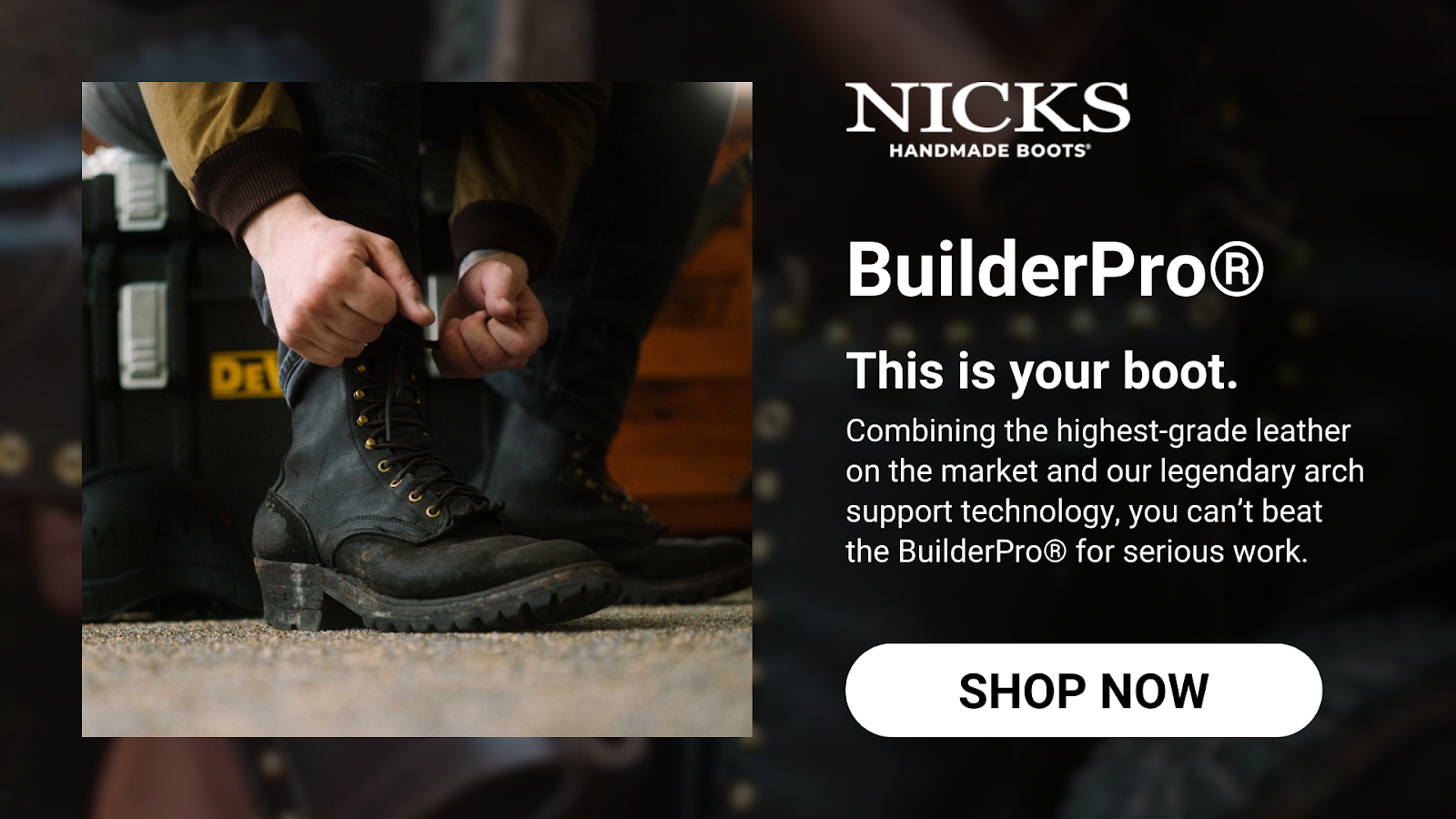
Final Thoughts
Breaking in a leather jacket is more than just a process—it’s an experience that transforms a stiff, new piece into a second skin. As the leather molds to your body, it takes on a character that reflects your lifestyle, movements, and personal style. While patience is key, the reward is a jacket that fits better, feels more comfortable, and develops a rich patina over time. Whether you let it break in naturally or speed up the process with gentle techniques, the journey makes your jacket truly yours. Treat it well, wear it often, and enjoy the evolution of a piece that will only get better with age.
Read also:
Frequently Asked Questions About How To Break In A Leather Jacket
Can I break in a leather jacket faster by wearing it while sleeping?
While it might seem like a good idea, wearing a leather jacket to bed won’t significantly speed up the break-in process. The lack of movement during sleep limits the natural stretching and molding of the leather. It’s better to wear it actively throughout the day to let it conform to your body.
Is it safe to use a hair dryer to soften a stiff leather jacket?
Using a hairdryer on leather is risky because excessive heat can dry out the material and cause cracks. If you must use heat, keep the dryer on low and hold it at a safe distance while massaging the leather with your hands. However, regular wear and body heat are the safest ways to soften leather.
Will rolling or folding my leather jacket help break it in?
Folding or tightly rolling a leather jacket may create unwanted creases that won’t go away easily. Instead of forcing folds, let natural movements like bending your arms and shoulders do the work. Proper wear ensures the leather softens without damaging its shape.
How do I break in a leather jacket without wearing it often?
If you can’t wear your jacket frequently, try stuffing the arms and body with soft towels to simulate body shape. You can also lightly bend and flex the material by hand to encourage softening. However, wearing it remains the best method for a natural break-in.
Can rain help break in my leather jacket?
A little rain or humidity can help soften leather, but too much moisture can damage it. If your jacket gets wet, wear it until it dries naturally to allow it to shape your body. Always apply a light leather conditioner afterward to prevent drying or cracking.
Should I use a leather softener spray to speed up the process?
Leather softener sprays can help loosen tough areas, but overuse can weaken the material. It is best to apply any product sparingly and in combination with regular wear. Too much softener can make the leather overly supple, affecting its durability.
Can I wear my leather jacket in the sun to break it in?
Sunlight can warm up the leather, making it more flexible, but prolonged exposure can dry it out and fade the color. Limit it to short periods if you use this method, and always follow up with a leather conditioner. A better alternative is to wear the jacket while walking outside in moderate weather.
Does the type of leather affect how long it takes to break in?
Yes, different types of leather have different break-in times. Full-grain and vegetable-tanned leathers take longer to soften, while softer leathers like lambskin break in more quickly. Knowing your leather type helps set realistic expectations for the process.
How tight should a new leather jacket feel when I first buy it?
A new leather jacket should feel snug but not overly restrictive, as it will stretch and mold to your body over time. It may be too small if it’s uncomfortably tight in the chest or shoulders. The right fit allows slight movement while still feeling structured.
What should I do if my leather jacket feels too stiff even after wearing it?
If your jacket remains stiff after several weeks of wear, try gently massaging the leather with your hands to loosen it up. Applying a small amount of leather conditioner can also help, but avoid overdoing it. If the stiffness persists, the leather may need more time to adjust to your body.



